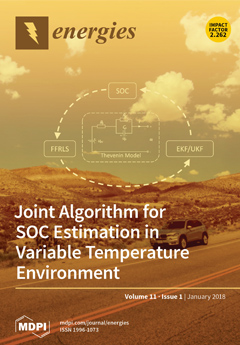1
Barbara Hardy Institute, School of Engineering, University of South Australia, Mawson Lakes, SA 5095, Australia
2
Centre for Renewable Energy, Research Institute for the Environment and Livelihoods, Charles Darwin University, Darwin, NT 0909, Australia
3
Institute for Sustainable Futures, University of Technology Sydney, Ultimo, NSW 2007, Australia
4
Australia China Relations Institute, University of Technology Sydney, Ultimo, NSW 2007, Australia
5
Energy Studies Institute, National University of Singapore, Singapore 119077, Singapore
6
Department of Communication, Universitas Nasional, Jakarta 12520, Indonesia
7
The School of Geography, Politics and Sociology, Newcastle University, Newcastle upon Tyne NE1 7RU, UK
8
School of Economics and Finance, Massey University, Auckland Campus, Albany 0632, New Zealand
Abstract
Australia is an energy net self-sufficient country rich in energy resources, from fossil-based to renewable energy. Australia, a huge continent with low population density, has witnessed impressive reduction in energy consumption in various sectors of activity in recent years. Currently, coal and natural
[...] Read more.
Australia is an energy net self-sufficient country rich in energy resources, from fossil-based to renewable energy. Australia, a huge continent with low population density, has witnessed impressive reduction in energy consumption in various sectors of activity in recent years. Currently, coal and natural gas are two of Australia’s major export earners, yet its abundant renewable energy resources such as solar, wind, and tidal, are still underutilized. The majority of Asian countries, on the other hand, are in the middle of economic expansion, with increasing energy consumption and lack of energy resources or lack of energy exploration capability becoming a serious challenge. Electricity interconnection linking two or more independent grids within a country or at cross-border or regional levels has found its way into electricity markets worldwide. This concept allows for electricity exchanges that lead to optimized use and sharing of electricity generated from different sources. The interconnection also enables the long distance exploitation of renewable energy which would otherwise be physically impossible. ASEAN (Association of Southeast Asian Nations) and other regional groupings in Asia have initiated a number of interconnections to gain economic benefits. Asian’s hunger for energy for its economic development, climate change that has become a global and urgent issue to be solved, and Australia’s abundant renewable energy resources have all prompted increasing interest in a super-grid interconnection linking Australia to Asian grids, the Australian–Asian (Power) Grid (AAG). This paper overviews the existing grid interconnections as well as current initiatives at domestic, sub-regional, and regional levels worldwide, with a particular focus on Asia. The paper concludes with a critical appraisal on the benefits, potential, challenges and issues to be encountered by the AAG initiative.
Full article





